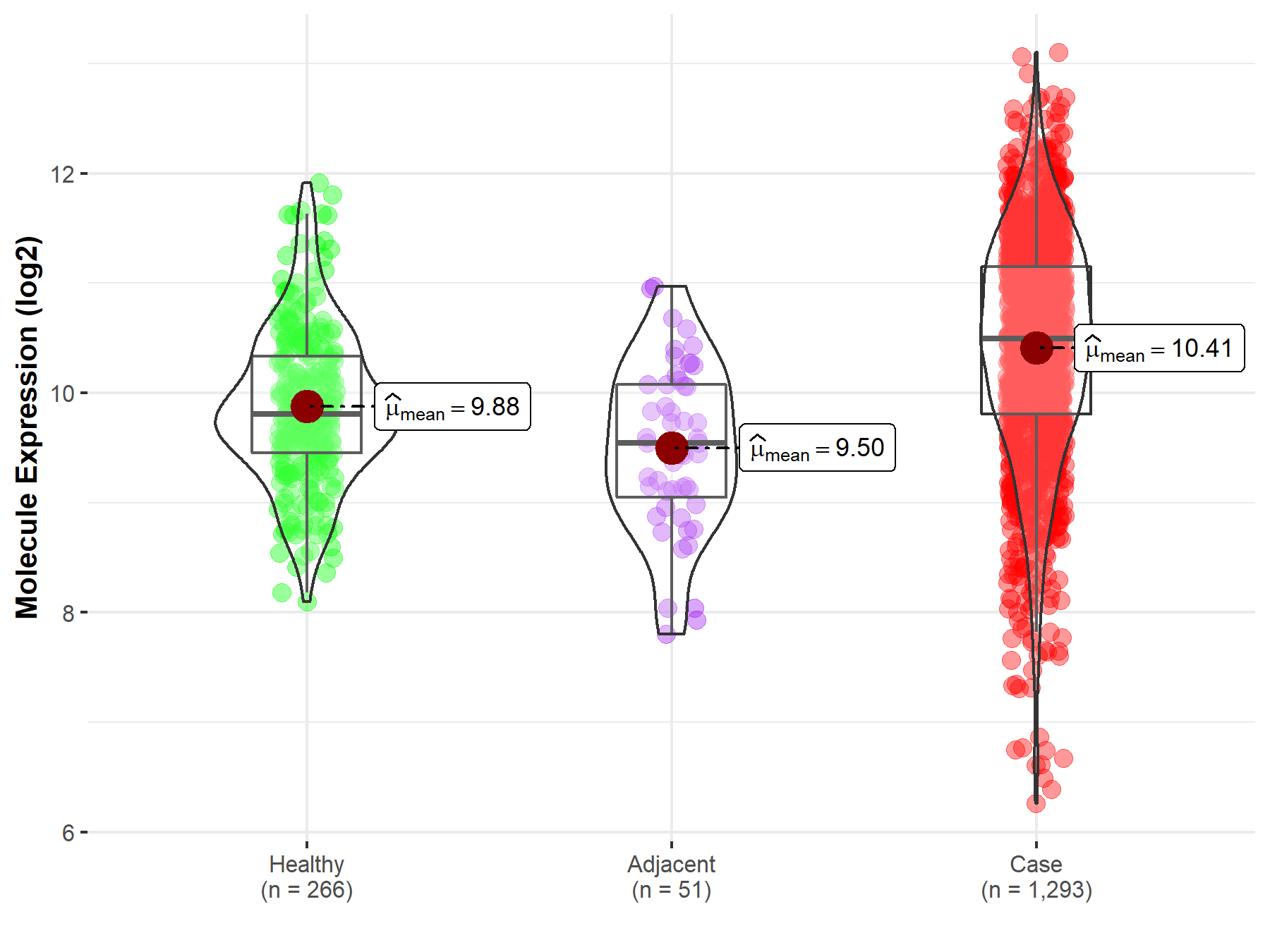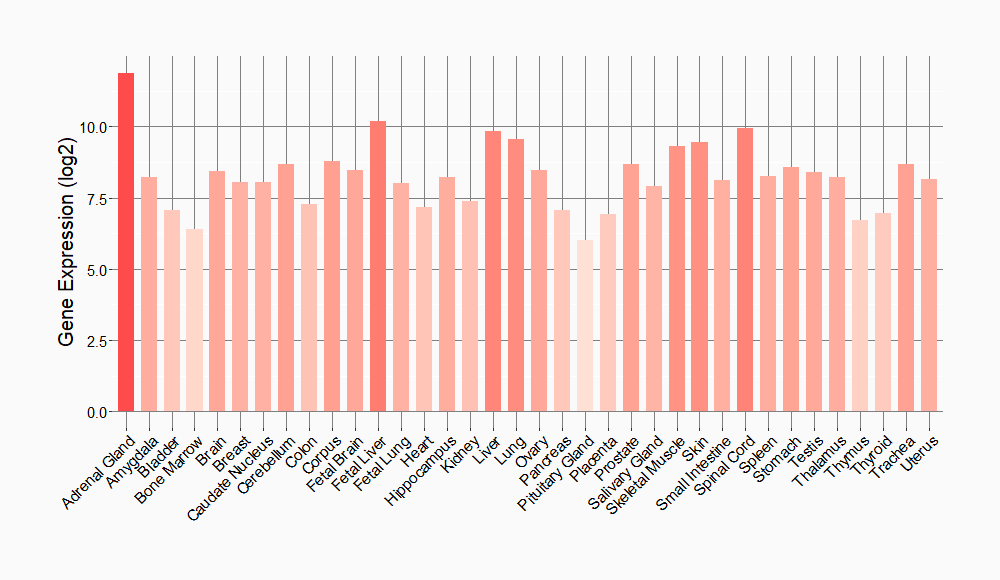Molecule Information
General Information of the Molecule (ID: Mol01865)
| Name |
24-dehydrocholesterol reductase (DHCR24)
,Homo sapiens
|
||||
|---|---|---|---|---|---|
| Synonyms |
DHCR24; KIAA0018
Click to Show/Hide
|
||||
| Molecule Type |
Protein
|
||||
| Gene Name |
DHCR24
|
||||
| Gene ID | |||||
| Location |
chr1:54,849,627-54,887,195[-]
|
||||
| Sequence |
MEPAVSLAVCALLFLLWVRLKGLEFVLIHQRWVFVCLFLLPLSLIFDIYYYVRAWVVFKL
SSAPRLHEQRVRDIQKQVREWKEQGSKTFMCTGRPGWLTVSLRVGKYKKTHKNIMINLMD ILEVDTKKQIVRVEPLVTMGQVTALLTSIGWTLPVLPELDDLTVGGLIMGTGIESSSHKY GLFQHICTAYELVLADGSFVRCTPSENSDLFYAVPWSCGTLGFLVAAEIRIIPAKKYVKL RFEPVRGLEAICAKFTHESQRQENHFVEGLLYSLDEAVIMTGVMTDEAEPSKLNSIGNYY KPWFFKHVENYLKTNREGLEYIPLRHYYHRHTRSIFWELQDIIPFGNNPIFRYLFGWMVP PKISLLKLTQGETLRKLYEQHHVVQDMLVPMKCLQQALHTFQNDIHVYPIWLCPFILPSQ PGLVHPKGNEAELYIDIGAYGEPRVKHFEARSCMRQLEKFVRSVHGFQMLYADCYMNREE FWEMFDGSLYHKLREKLGCQDAFPEVYDKICKAARH Click to Show/Hide
|
||||
| Function |
Catalyzes the reduction of the delta-24 double bond of sterol intermediates during cholesterol biosynthesis. In addition to its cholesterol-synthesizing activity, can protect cells from oxidative stress by reducing caspase 3 activity during apoptosis induced by oxidative stress. Also protects against amyloid-beta peptide-induced apoptosis.
Click to Show/Hide
|
||||
| Uniprot ID | |||||
| Ensembl ID | |||||
| HGNC ID | |||||
| Click to Show/Hide the Complete Species Lineage | |||||
Type(s) of Resistant Mechanism of This Molecule
Drug Resistance Data Categorized by Drug
Approved Drug(s)
1 drug(s) in total
| Drug Resistance Data Categorized by Their Corresponding Mechanisms | ||||
|
|
||||
| Disease Class: Breast cancer [ICD-11: 2C60.3] | [1] | |||
| Resistant Disease | Breast cancer [ICD-11: 2C60.3] | |||
| Resistant Drug | Fluvastatin | |||
| Molecule Alteration | Expression | Up-regulation |
||
| Differential expression of the molecule in resistant disease | ||||
| Classification of Disease | Breast cancer [ICD-11: 2C60] | |||
| The Specified Disease | Breast cancer | |||
| The Studied Tissue | Breast tissue | |||
| The Expression Level of Disease Section Compare with the Healthy Individual Tissue | p-value: 2.03E-22 Fold-change: 7.58E-02 Z-score: 1.02E+01 |
|||
| Experimental Note | Discovered Using In-vivo Testing Model | |||
| Cell Pathway Regulation | Steroid biosynthesis signaling pathway | Activation | hsa00100 | |
| Terpenoid bacKbone biosynthesis signaling pathway | Activation | hsa00900 | ||
| Steroid hormone biosynthesis signaling pathway | Activation | hsa00140 | ||
| In Vitro Model | MCF-10A-neoT cells | Breast | Homo sapiens (Human) | CVCL_5554 |
| In Vivo Model | SV40 C3TAg transgenic mouse model | Mus musculus | ||
| Experiment for Molecule Alteration |
Clariom D RNA profiling assay | |||
| Experiment for Drug Resistance |
MTT assay; Colony formation assay | |||
| Mechanism Description | Acquired resistance to fluvastatin is mediated by restorative upregulation of cholesterol biosynthesis pathway genes. | |||
Disease- and Tissue-specific Abundances of This Molecule
ICD Disease Classification 02

| Differential expression of molecule in resistant diseases | ||
| The Studied Tissue | Breast tissue | |
| The Specified Disease | Breast cancer | |
| The Expression Level of Disease Section Compare with the Healthy Individual Tissue | p-value: 2.03E-22; Fold-change: 6.84E-01; Z-score: 9.66E-01 | |
| The Expression Level of Disease Section Compare with the Adjacent Tissue | p-value: 2.69E-11; Fold-change: 9.48E-01; Z-score: 1.25E+00 | |
|
Molecule expression in the normal tissue adjacent to the diseased tissue of patients
Molecule expression in the diseased tissue of patients
Molecule expression in the normal tissue of healthy individuals
|
||
| Disease-specific Molecule Abundances |

|
Click to View the Clearer Original Diagram |
Tissue-specific Molecule Abundances in Healthy Individuals


|
||
References
If you find any error in data or bug in web service, please kindly report it to Dr. Sun and Dr. Yu.
